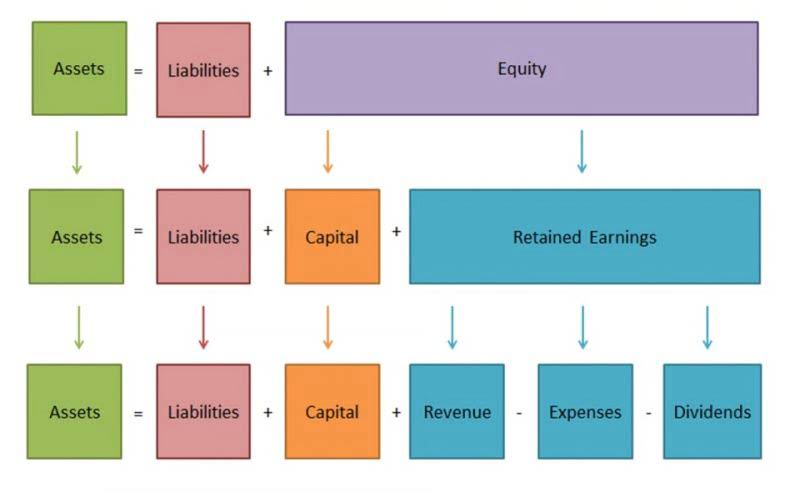In production and supply-chain management, the term work-in-progress (WIP) describes partially finished goods awaiting completion. WIP refers to the raw materials, labor, and overhead costs https://www.quick-bookkeeping.net/self-employed-invoice-template/ incurred for products that are at various stages of the production process. These costs are subsequently transferred to the finished goods account and eventually to the cost of sales.
The terms work-in-progress and finished goods are relative terms made in reference to the specific company accounting for its inventory. It’s incorrect to assume that finished goods for one company would also be classified as adjusting entry for prepaid expense finished goods for another company. For example, sheet plywood may be a finished good for a lumber mill because it’s ready for sale, but that same plywood is considered raw material for an industrial cabinet manufacturer.
Manufacturing cost
Work-in-process inventory is materials that have been partially completed through the production process. These items are typically located in the production area, though they could also be held to one side in a buffer storage area. The cost of work-in-process typically includes all of the raw material cost related to the final product, since raw materials are usually added at the beginning of the conversion process. Also, a portion of the direct labor cost and factory overhead will also be assigned to work-in-process; more of these costs will be added as part of the remaining manufacturing process. In supply-chain management, work-in-progress (WIP) refers to goods that are partially completed. This covers everything from the overhead costs to the raw materials that come together to form the end product at a given stage in the production cycle.
While these two KPIs are often used interchangeably, certain industries use them in different ways. Work in process refers to raw materials that are processed into finished goods inventory, while work in progress often refers to the progress of a project in the construction and service industries. The production cost for these goods factor in the labor cost, overhead cost, and material cost to create the total cost. However, the terms are interchangeable when we’re talking about brands selling physical products. Your raw materials inventory consists of table legs, varnish, and tabletops. When a manufacturing order comes in and a forklift driver is sent to fetch the table legs and tabletops, these materials become part of the WIP inventory because they have met with labor.
- Brands can ensure an optimal stock level with real-time inventory tracking, low inventory level alerts, and a predictive view of remaining product.
- WIP is a concept used to describe the flow of manufacturing costs from one area of production to the next, and the balance in WIP represents all production costs incurred for partially completed goods.
- It’s also simply good practice to keep WIP inventory as slim and optimized as possible for overall inventory management.
- While work in process inventory isn’t sitting on a shelf waiting to be sold, it does need to be stored somewhere.
- By following best practices – like tracking progress regularly, setting realistic goals, and more – you can effectively manage your work in process inventory and reap the rewards that follow.
- To achieve this, WIP needs to be continuously managed and tracked throughout the manufacturing process.
In accounting, WIP is an asset designating the combined value of all unfinished goods. Calculating WIP precisely can be difficult, particularly for more complex manufacturing setups. Workloads are rarely uniform from period to period, save for Make-to-Stock (MTS) or mass producers with very stable demand. This is why production management software and traceability tools can go a long way in accurately measuring difficult metrics like the percentage of manufacturing overhead costs applicable to in-process jobs. Basic resources are rolled into a factory, followed by loud noises and a smoking chimney. On their journey toward becoming final products, raw materials go through work in process inventory.
This can be critical in ensuring everyone is informed about changes in stock levels or production processes. Not to mention, without proper tracking systems in place, there’s an increased risk that items may get lost or misplaced during production processes, leading to further delays or costly mistakes down the line. The beginning WIP inventory cost is determined using the asset section of your balance sheets from previous periods.
The WIP formula involves components like beginning WIP inventory cost, the cost of manufacturing, and the cost of manufactured (finished) goods. A piece of inventory is classified as a WIP whenever it has been mixed with human labor but has not reached final goods status. WIP, along with other inventory accounts, can be determined by various accounting methods across different companies. COGM is defined as the total costs incurred while creating a finished product, and in order to estimate the value of a company’s end-of-period WIP, the finished COGM is a necessary input. Businesses that sell highly custom products (e.g., hand-made products on Etsy) are more likely to oversee the WIP inventory process than a business that purchases finished goods directly from a supplier or manufacturer.
Managing and tracking WIP inventory
For some, work-in-process refers to products that move from raw materials to finished products in a short period. Knowing how to accurately calculate WIP inventory can impact your balance sheet. If your business offers highly customized products, then it’s important to understand how WIP inventory works, what goes into the cost, and how to calculate it at the end of the accounting period. This will give you a sense of COGS based on how much it costs to produce and manufacture finished goods. In order to calculate work in process, a brand first needs to determine its beginning work inventory for the next time period. A brand also needs to determine its manufacturing costs and the cost of manufactured goods (COGM).
If you have a lot of WIP on hand, you can take advantage of economies of scale. Additionally, you can utilize assembly line workers more effectively since they’ll always have something to do. The cost of the beginning WIP inventory is the cost of the unfinished goods that were in production at the beginning of the period. It’s worth pointing out that this year’s beginning WIP is last year’s ending WIP inventory. Work in process (WIP) is inventory being worked on but isn’t ready to be shipped out yet. In other words, it’s goods that are in the middle of the production process.
Work in process inventory formula
He currently researches and teaches economic sociology and the social studies of finance at the Hebrew University in Jerusalem. Get instant access to video lessons taught by experienced investment bankers. Learn financial statement modeling, DCF, M&A, LBO, Comps and Excel shortcuts. Work-in-process inventory is also called work-in-progress inventory or WIP inventory. Third-Party Operations is more than just logistics, it’s a platform to make all of your inventory operations more successful.
Once the company has those metrics, it can calculate the work in process inventory with the formula below. In practice, advanced manufacturers find the COGM and ending WIP values based on real data from their production management system. COGM is found by tallying up the real costs from manufacturing orders as calculated or estimated by the production management tool, whether it’s MRP/ERP software, spreadsheets, or a pen-and-paper approach.



